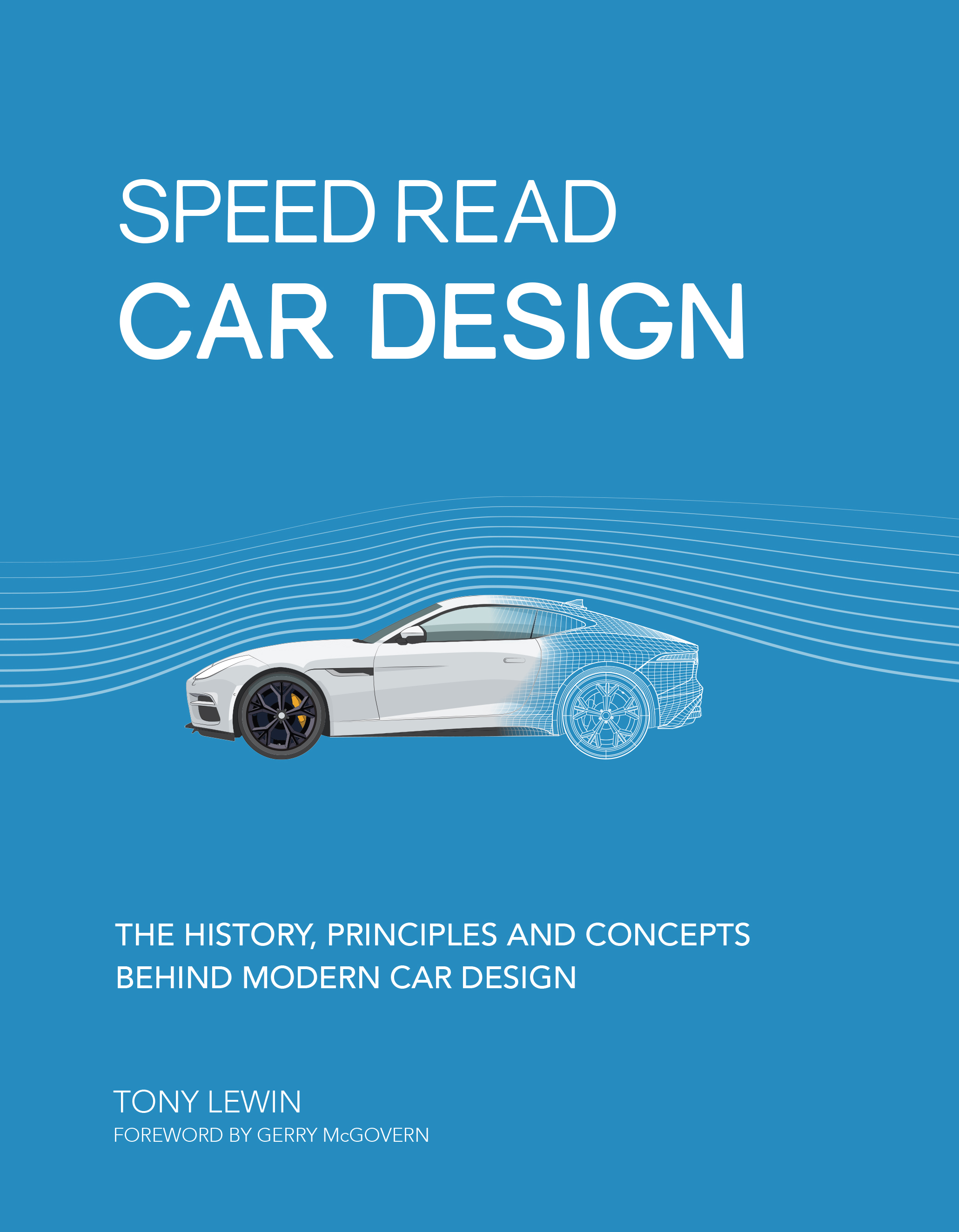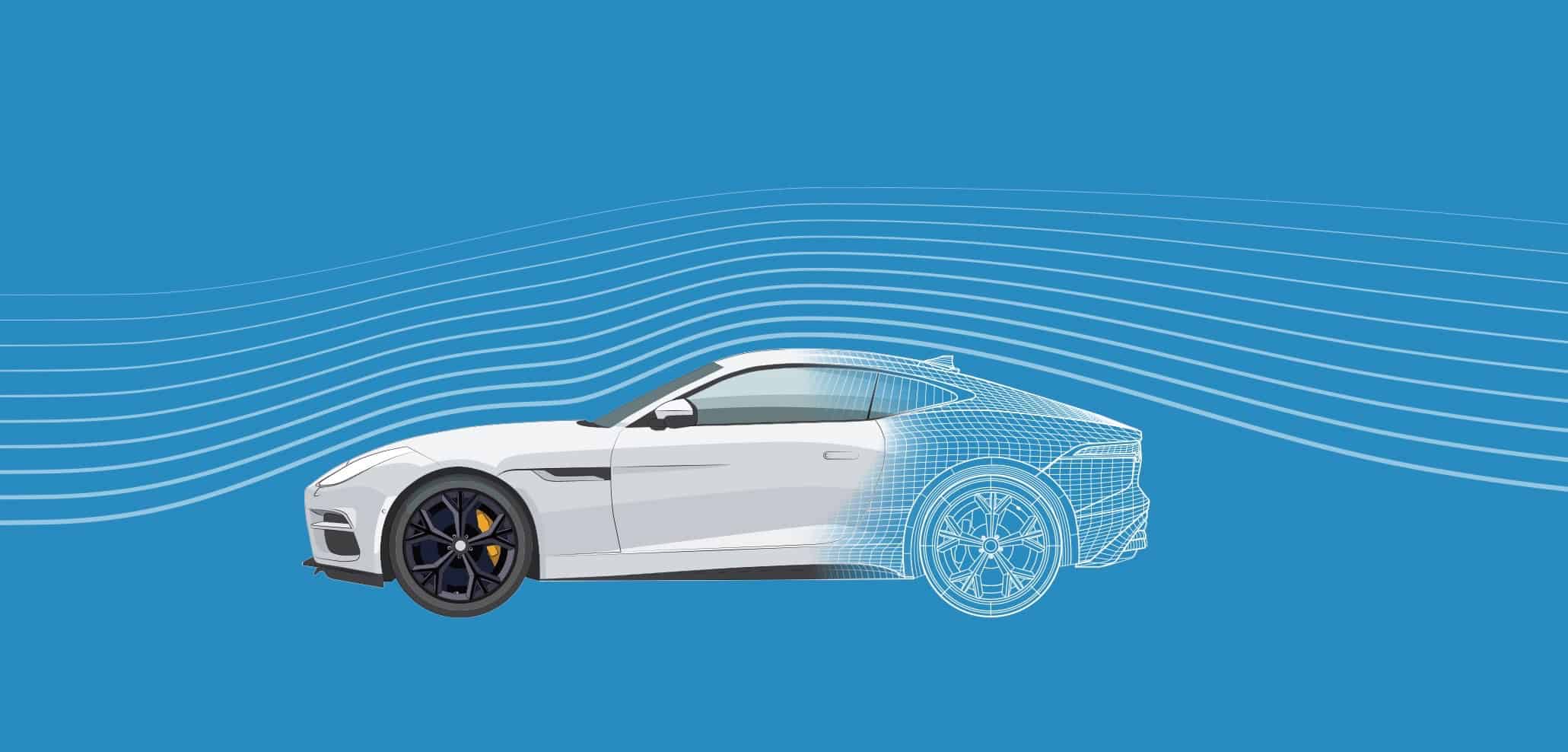
Although I don’t know how you could write a book on automotive design without the word “tumblehome” appearing in at least one of that book’s seven glossaries, I still appreciate brilliance of Motorbook’s Speed Read series and enjoyed my speed read of the Car Design volume.
Motorbooks, a part of the Quarto Publishing Group, launched the Speed Read series in 2017 with books on Car Design, F1, Supercar and Porsche 911 and recently has added Mustang and Ferrari to the mix.
Each book is designed for speedy reading, spanning 160 pages on heavy 22.5 x 17mm paper (roughly 9 x 6 1/2 inches), with brightly colored covers, and following a format designed for speedy reading in the digital age.
Instead of chapters, there are sections, each divided into sub-headed chapters that span two pages. One page has the text and the other page an illustration. The reading is quick and easy but also informative. Many of the pages of text also offer vertical panel of sidebars.
For example, on the chapter page for “Innovation: Ugly Ducklings, Lemons, and Lost Causes,” we not only learn about misshapen automotive outcasts, but are presented with brief sidebars on the Pontiac Aztek, the Mercedes-Benz GLK, and how the reborn Mini became bloated.
Technically, this book is titled Car Design: The History, Principles and Concepts Behind Modern Car Design, which sounds more like a text book for design students at the Art Center or College for Creative Studies than a delightfully quick and colorful run through why cars look the way they do.
The book was written by Tony Lewin, a British author of several automotive titles and former automotive magazine editor, and has a Foreword by Gerry McGovern, chief design officer at Land Rover (and formerly chief designer of Ford’s Lincoln division).
The book’s sections range from “The Birth of Car Design” to “And What Comes Next?” Among them is “The Elements of Style,” with chapters that include “How to Read a Design;” “Windows, Arches, Pillars and Doors;” “The Style that Lasts;
“Masterclass: Giugiaro’s Greatest Hits,” and one of the book’s seven glossaries.
But, alas, no definition of tumblehome.
P.S. — Motorbooks also sent along a copy of Mustang: The History, Design and Culture Behind Ford’s Original Pony Car, written by Donald Farr, as an example of the make-and-model-focused Speed Read books.
The sections are “The Launch,” “Generations,” “Every Man’s Sports Car,” “Performance,” “Shelby,” “Special Editions,” and “Racing.”
The book seems an ideal way to introduce your junior high son or daughter — or maybe that spouse that doesn’t understand your automotive love affair — to an appreciation of the Mustang lifestyle you so enjoy living.
Reviewed
Speed Read: Car Design — The History, Principles and Concepts Behind Modern Car Design
By Tony Lewin
Quarto Publishing Group (Motorbooks), 2017
ISBN: 978-0-7603-5810-8
Softcover, 160 pages
$19.99








